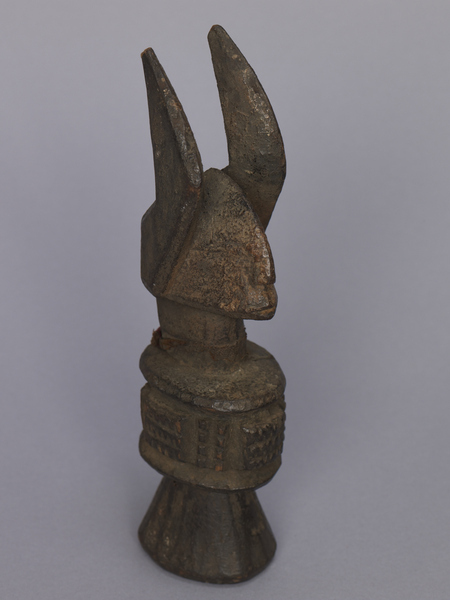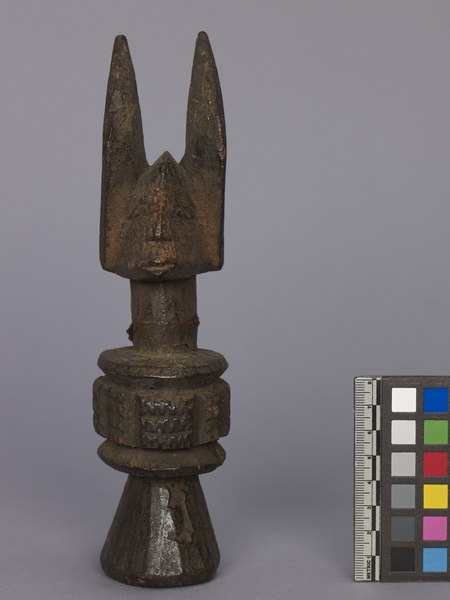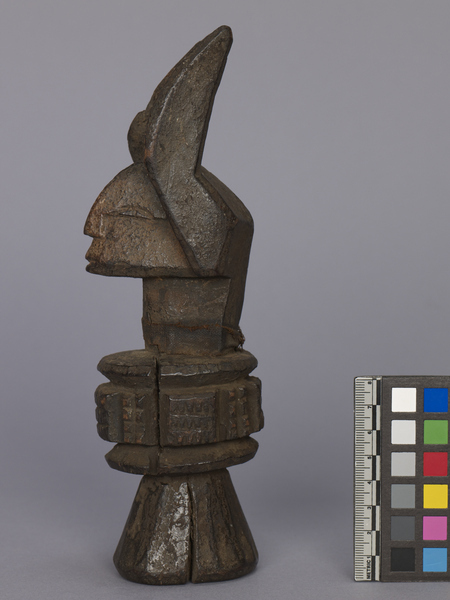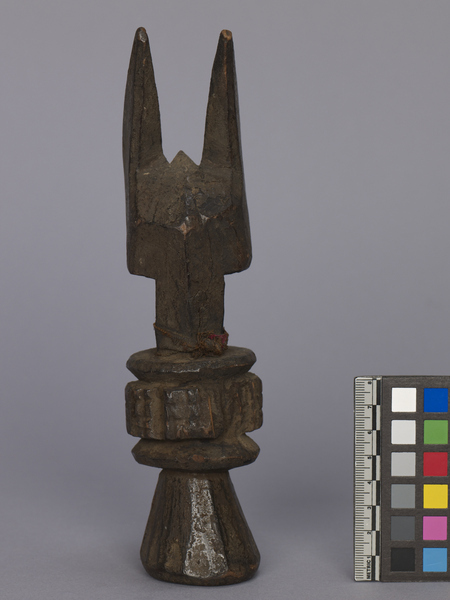Figure Item Number: 3055/15 from the MOA: University of British Columbia




Description
Wooden ikenga figure. The figure has a conical base with a cylindrical torso. The torso/body is decorated with incised zigzag lines and raised sections of wood with grooves around the edges of the midsection. The figure’s neck is long and wrapped at the base with a thin, degraded strip of woven fabric which is knotted at the back of the neck. The figure’s head is rounded in the back but with a triangularly shaped face including a pointy, beaked nose and sharply pointed small chin and lips. The eyes are stylized slits on the edges of the face, and attached to the sides of the head are two large, curved horns. The horns are v-shaped and point backwards away from the face. There is a large crack in the figure extending from the neck to the base on the left side.
History Of Use
Ikenga (literally "strength of movement") is a horned spirit and one of the most powerful symbols for the Igbo people. Smaller figures were owned by individual men; larger ones were made for family and village shrines. Although taking on different forms, the figures always have a pair of ram’s horns, representing the animal’s strength and fortitude, characteristics like power, achievement and upward mobility, valued by men who regularly invoke them for success. Ikenga rarely stand alone; they appear on altars alongside other objects dedicated to chi or ndimmo (ancestors). This acknowledges achievements of individuals, as well as relationships with family and the creator. To affirm these relationships, the ensembles are given joint offerings. When ikenga do stand alone, sometimes in the sleeping quarters of their owners, the offerings they are given only acknowledge success in personal undertakings, such as hunting or trading expeditions. Annual feasts dedicated to ikenga provide further opportunity for the evaluation of personal achievement.
Item History
- Made in Nigeria
- Owned by Alan R. Sawyer before 2002
- Owned by Erika H. Sawyer before April 16, 2014
- Received from Erika H. Sawyer (Seller) and Museum of Anthropology Acquisitions Budget (Funding source) on April 16, 2014
What
- Name
- Figure
- Identification Number
- 3055/15
- Type of Item
- figure
- Material
- wood and plant fibre
- Overall
- height 22.1 cm, width 4.9 cm, depth 5.5 cm
Who
- Culture
- Igbo
- Previous Owner
- Alan R. Sawyer and Erika H. Sawyer
- Received from
- Erika H. Sawyer (Seller) and Museum of Anthropology Acquisitions Budget (Funding source)
Where
- Holding Institution
- MOA: University of British Columbia
- Made in
- Nigeria
When
- Ownership Date
- before 2002 and before April 16, 2014
- Acquisition Date
- on April 16, 2014
Other
- Item Classes
- carvings & sculpture
- Condition
- fair
- Accession Number
- 3055/0015